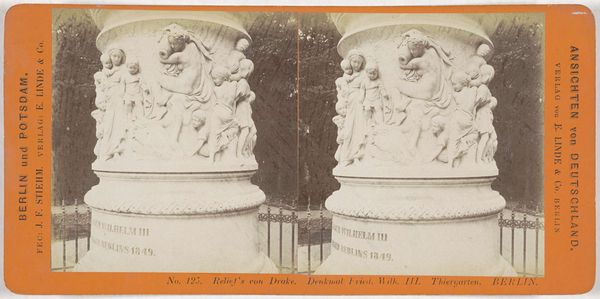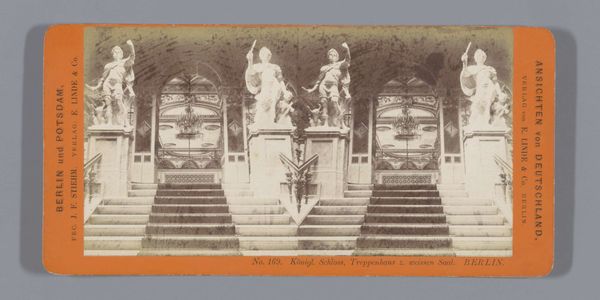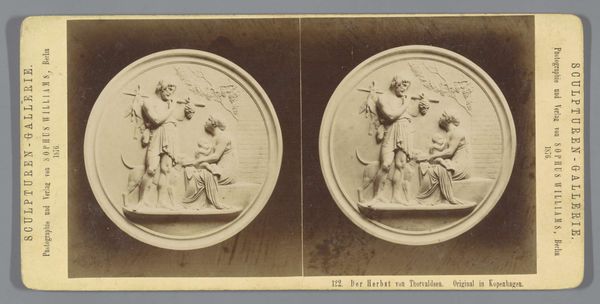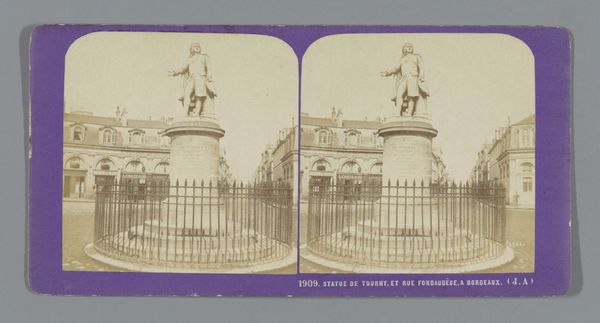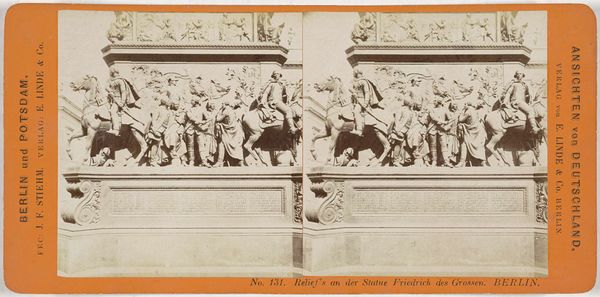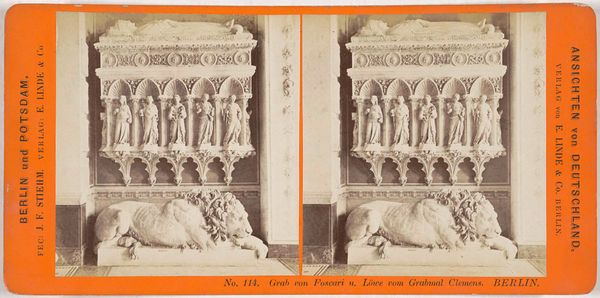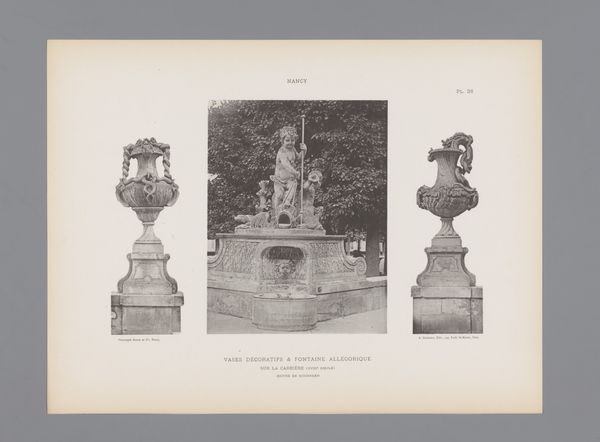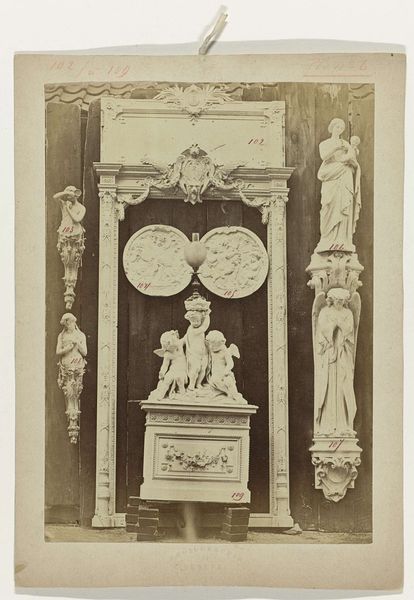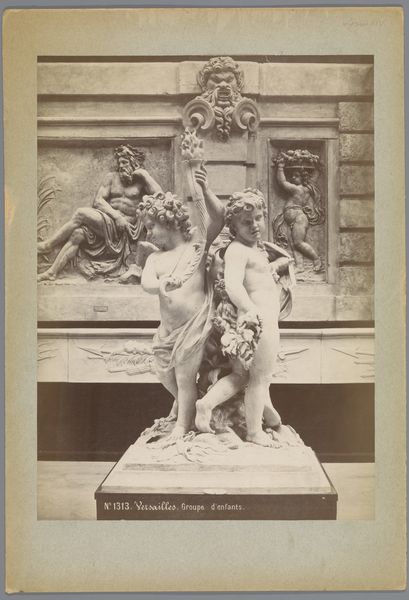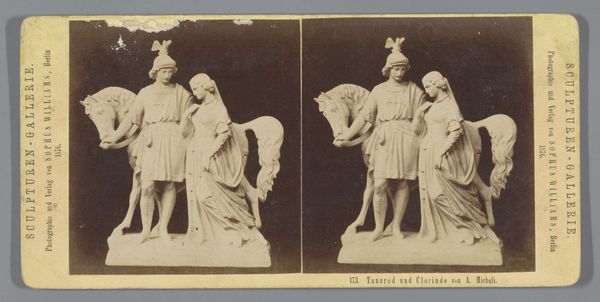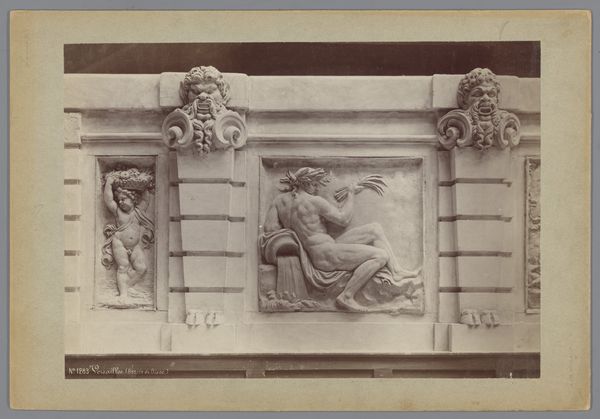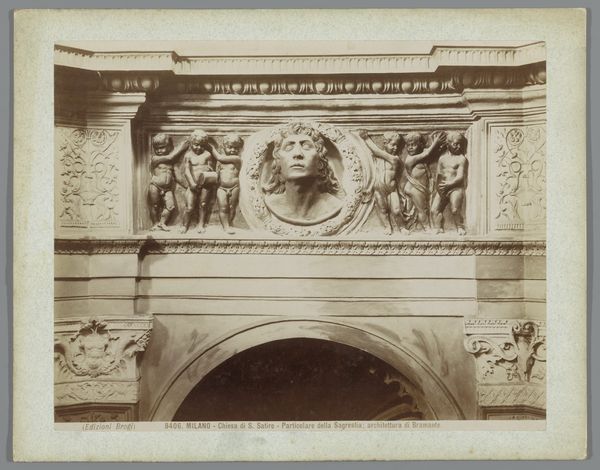
Reliëf op de sokkel van Friedrich Drakes beeld van Friedrich Wilhelm III in de Tiergarten, Berlijn 1868 - 1870
0:00
0:00
relief, photography, sculpture
#
portrait
#
relief
#
photography
#
sculpture
Dimensions: height 87 mm, width 177 mm
Copyright: Rijks Museum: Open Domain
Curator: This is a stereo photograph, likely from around 1868-1870, by Johann Friedrich Stiehm, showcasing a relief sculpture on the pedestal of Friedrich Drake's statue of Friedrich Wilhelm III in Berlin's Tiergarten. Editor: It's striking how the sculptor’s style contrasts the rather grim imperialistic agenda monuments so often uphold. I'm immediately drawn to the idealized figures that are bursting with classical allusions; almost feminine grace at the base of this stoic Prussian symbol. It looks rather imposing. Curator: Indeed. The photograph offers us a lens to examine the sculpture's place within the historical narrative. Monuments like these, celebrating Prussian monarchs, played a significant role in shaping national identity and reinforcing the power structures of the time. The placement within the Tiergarten, a public space, further underscores the artwork's intended role in the civic sphere. Editor: And let's not overlook the social and political implications embedded in that visual language. The bodies of women are presented almost like trophies on the base of that patriarchal monument— a symbol of female subjugation at the foot of the great king. The relationship is, as so often is the case, unsettling. Curator: I agree, and while we can dissect its role within a national narrative of power and consider gender, this representation can be investigated on various levels. What's also fascinating to me is how the artwork itself interacts with public perception, inviting us to reflect on the enduring influence of historical narratives and the politics of imagery within urban spaces. It embodies the museum's very public role! Editor: It prompts critical questions about the narratives we inherit and the power structures that often underpin them. Thank you, that really put this work in perspective for me! Curator: It was my pleasure. Looking closely allows us to have a window into the social and cultural environment of late 19th-century Berlin and also connect this older artwork with the theories that explain how it may influence us now.
Comments
No comments
Be the first to comment and join the conversation on the ultimate creative platform.
